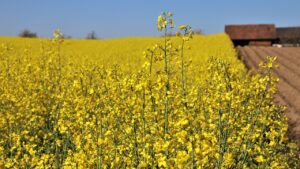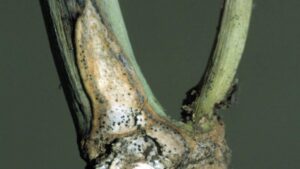The Government of Saskatchewan recently shared the Saskatchewan Clubroot Distribution Map, an asset that provides an outline of where clubroot has been identified among the rural municipalities (RMs), according to a release.
In 2022, two more commercial canola fields recorded visible clubroot symptoms and four new fields detected the clubroot pathogen. Visible clubroot symptoms have now been confirmed in 82 commercial fields, and 42 fields have detected the clubroot pathogen through DNA-based testing where no visible symptoms were shown. These findings exhibit how crucial the monitoring and management of clubroot is under The Pest Control Act.
As a soil-borne disease, clubroot can result in significant yield loss if the pathogen levels are high, a crop that is susceptible is grown and environmental conditions are favourable. To reduce possible yield losses, proactive clubroot management consisting of rotation, resistant varieties and good sanitation practices is encouraged.
All producers that have recorded visible clubroot symptoms — as well as those whose fields contain the pathogen yet have shown no symptoms — have been notified. Specific land locations are not shared publicly to maintain the producer’s privacy. The location will only be given to the appropriate RM if clubroot-specific bylaws are enacted with confirmed visible symptoms.
“Clubroot can impact our producers, landowners and the province’s strong canola market,” said Agriculture Minister David Marit. “This map helps the ministry to track and manage clubroot while preventing it from reaching other fields.”
Last year, more than 500 fields were inspected under the clubroot monitoring program. Producers and industry agrologists were provided a free soil testing kit through the Ministry of Agriculture. A total of 39 soil samples were submitted to the laboratory for an analysis, with SaskCanola covering the cost of every test.
“SaskCanola funds province-wide disease testing for clubroot to ensure we have a good understanding of the regions where the disease is present. This way, canola growers can make the best management decisions for their farm to prevent the spread of this invasive soil-borne disease,” shared Keith Fournier, chair of SaskCanola’s research committee.
In collaboration with SaskCanola, the Saskatchewan Crop Insurance Corporation and plant health officers, the Ministry of Agriculture implemented the clubroot monitoring program in order to understand the distribution and extremity of the disease where it has already been detected. In-field surveillance, paid-for on-farm soil DNA testing and encouraged clubroot reporting via producers and the industry are all included in the program.













